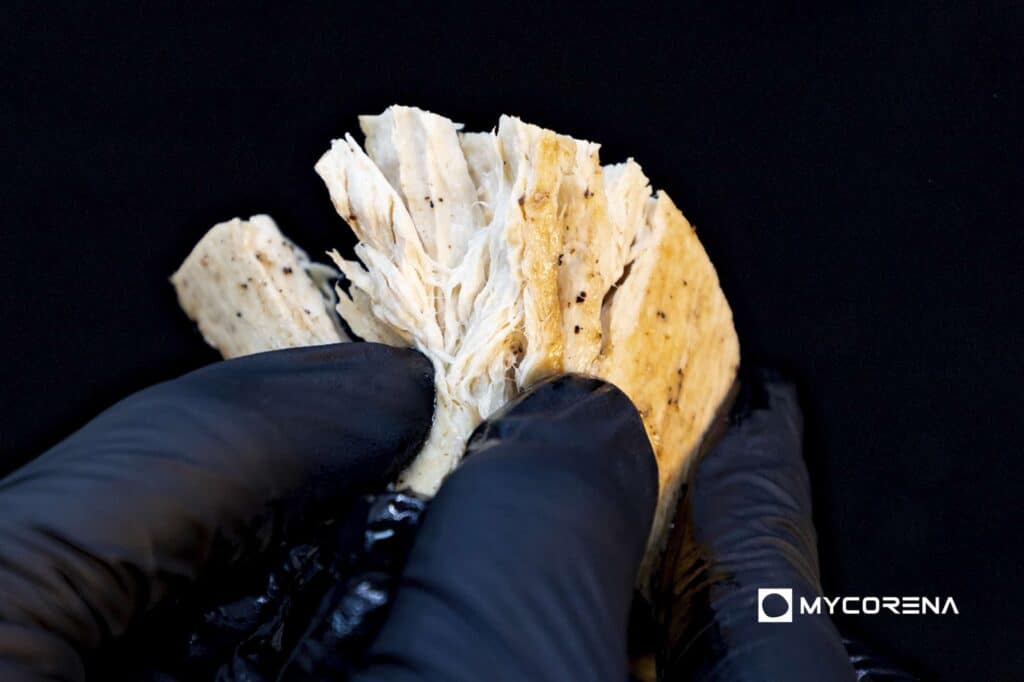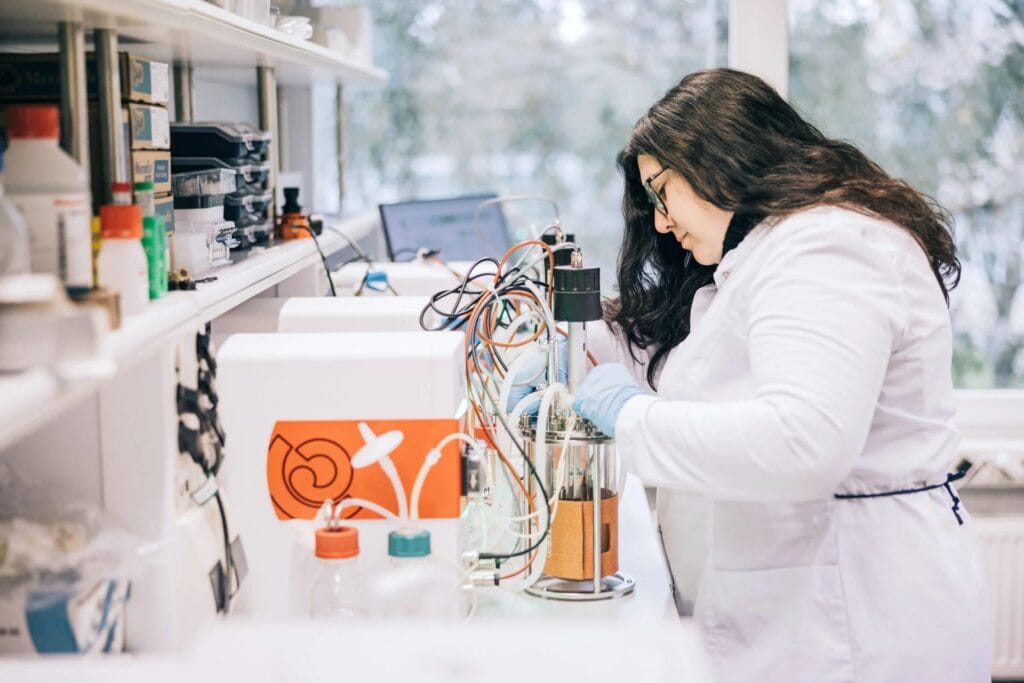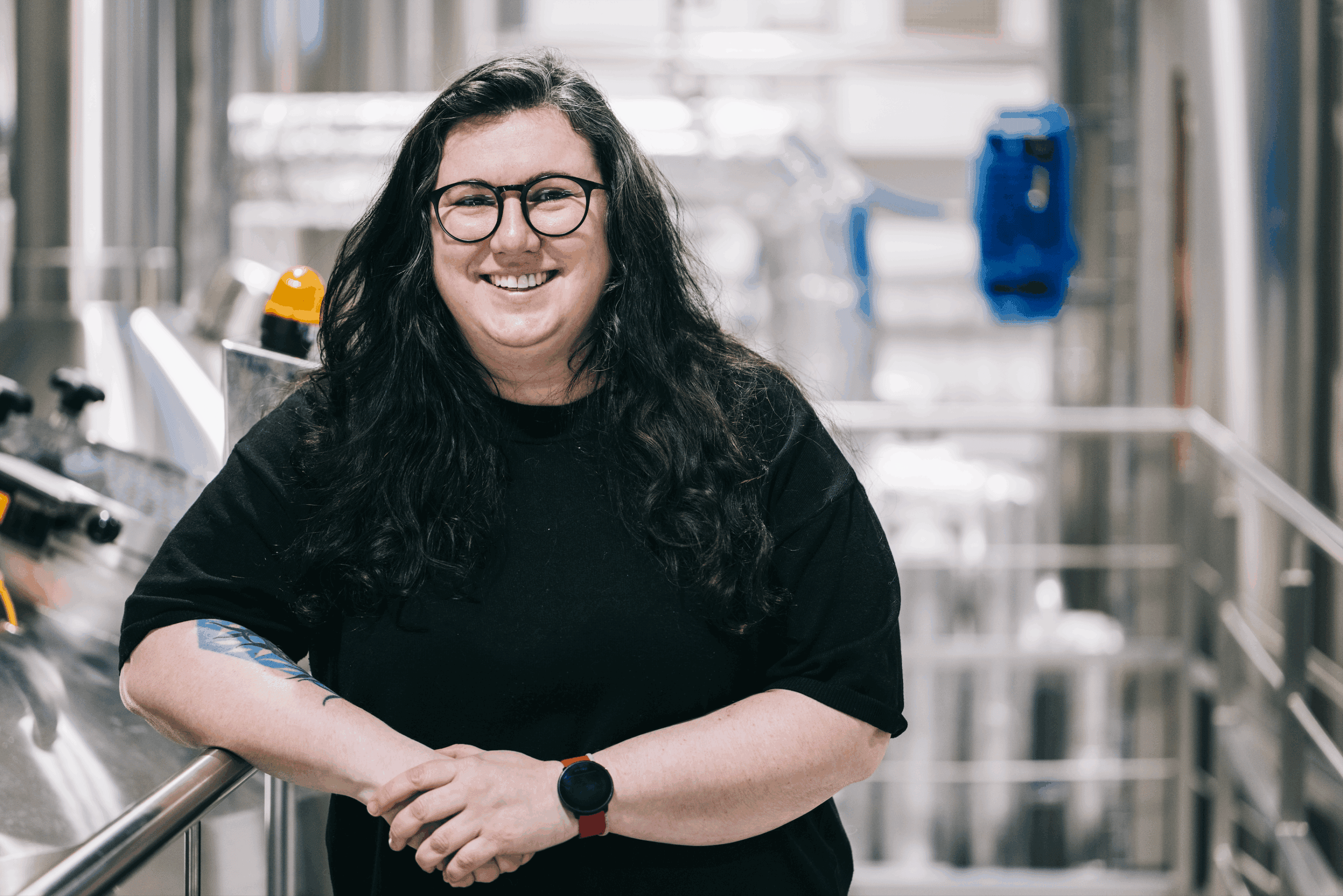Nemailla Bonturi is a biotech entrepreneur and executive with over a decade of experience in applied microbiology, fermentation, and circular bioeconomy. As the co-founder and CEO of ÄIO, she is driving the company’s mission to transform agricultural and food industry side-streams into sustainable alternatives to palm oil, coconut oil, and animal fats. With a PhD from the University of Campinas (Brazil), Nemailla is passionate about climate-positive innovation and has been recognized for her leadership in advancing sustainable ingredients in both the food and cosmetics sectors.
In this guest post, Nemailla discusses the differences between biomass and precision fermentation technologies, their roles in building sustainable food systems, and how they can work together to address the environmental challenges posed by traditional food production methods.
As the food industry continues to look for more sustainable, ethical, and healthy ingredients, the terms biomass fermentation and precision fermentation are gaining traction as alternative methods for producing proteins, fats, and oils, for instance. Both of these methods are critical for building resilient food systems that help reduce emissions, land use, and reliance on animals and agricultural chemicals.
To grasp the fundamental differences between these methods, it helps to start at the roots. Biomass fermentation is an ancient practice: humans have used microbes to produce bread, beer, and ethanol for thousands of years. In biomass fermentation, naturally occurring microbes, such as yeast, are cultivated in bioreactors. These microbes grow quickly and accumulate valuable nutrients, such as protein, fats, or fiber. After fermentation, the microbe is harvested, dried, and used as a nutrient-dense, lipid-rich end product. The result of biomass fermentation can be, for example, mycoprotein, which has a protein-rich, fibrous structure that resembles meat.

Precision fermentation emerged for industrial scale applications in the late 20th century as a more targeted approach to microbial production. In precision fermentation, a genetically modified microbe is programmed to produce a specific target compound, such as vitamins or enzymes. After fermentation in a bioreactor, the microbe itself is not used as the product, like in biomass fermentation. Instead, the target molecule is purified and refined through careful downstream processing. The result is usually a pure substance that is chemically and functionally identical to what you’d find in nature, like animal or egg white protein. For instance, a meat-like, plant-based patty in a hamburger can be made using precision fermentation.
Leveraging the strengths of different fermentation methods
At first glance, one might assume that biomass fermentation is the superior method. It has existed for much longer, involves less processing, and doesn’t depend on genetically modified organisms (GMOs). However, these two approaches shouldn’t be viewed as competing technologies. Biomass and precision fermentation are complementary methods, each suited to different applications. So, in what contexts does each one shine?
Biomass fermentation is efficient and well-suited for producing large volumes of nutritious, scalable, and cost-effective ingredients. It’s particularly effective for food applications where quantity and nutrition matter more than precision. Precision fermentation, on the other hand, is ideal for applications that demand high functionality, consistency, and accuracy. Typical use cases include high-value food ingredients, cosmetics, and pharmaceuticals, where even minor differences in composition can significantly impact performance or safety. In short, biomass fermentation excels in simplicity and scale, while precision fermentation provides tailored solutions where nature alone can’t keep up.

Choosing the most suitable fermentation method
For instance, the production of nutritional yeast is already highly efficient through biomass fermentation because it relies on naturally occurring microbes that are cultivated without genetic modification and used as the product itself. However, when it comes to producing specific fats, such as those found in cow or chicken meat, butter, or cacao, precision fermentation becomes invaluable. Microbes don’t naturally produce these specific complex fat profiles in the ratios found in animal products, but can be reprogrammed to do so. This offers a sustainable alternative to resource-intensive farming.
In the past, some large companies have used precision fermentation in ways that raised ethical concerns, which has contributed to its negative reputation. On top of that, misinformation and fake news about GMOs have fueled consumer fears. That’s why companies working in innovative food production must actively address these concerns related to precision fermentation through transparent communication and education. In fact, consuming genetically modified ingredients that require fewer chemical inputs can actually be a healthier and more environmentally friendly choice than eating food contaminated with pesticides.
Take beta carotene, for example. While it can be extracted from carrots, this method is often unsustainable. It requires significant land use and heavy reliance on pesticides. On top of that, factors like weather conditions can disrupt the supply of raw materials. In contrast, beta-carotene oil can be produced through biomass fermentation using naturally occurring microbes, or via precision fermentation with genetically modified microbes in controlled bioreactors. This approach offers a more stable, scalable, and sustainable alternative, with consistent quality and reduced environmental impact.

Toward a future-proof food system
Despite the challenges that precision fermentation still faces, it is steadily gaining ground alongside biomass fermentation. While biomass fermentation remains a reliable and efficient method, precision fermentation unlocks a world of possibilities for innovative food production. Its growth has been especially strong in the Americas, where GMO regulations are less restrictive than in regions like Europe. An increasing number of deep tech startups are entering the space, recognizing the urgent need for alternative solutions to safeguard global food systems.
As the impact of unsustainable food production continues to strain our planet, the food industry must rethink its pricing strategies to make sustainable alternatives both accessible and attractive to consumers. It’s time to shift focus from traditional, often cheaper ingredients toward sustainable, future-shaping options. For example, fermentation-based alternatives to palm oil and animal fats are emerging and could gradually replace them – provided that challenges related to scaling and cost competitiveness are addressed. This approach would not only benefit the environment but also human health.
Biomass and precision fermentation stand as two vital pillars of a future-proof food system. These methods don’t compete, they complement each other: biomass fermentation enables the scalable production of nutrient-dense, functional ingredients, while precision fermentation makes it possible to create high-value, targeted compounds that were once unsustainable or out of reach. Together, they offer real solutions for a world in urgent need of change.




